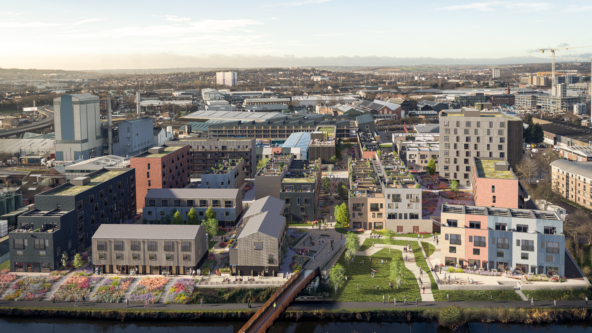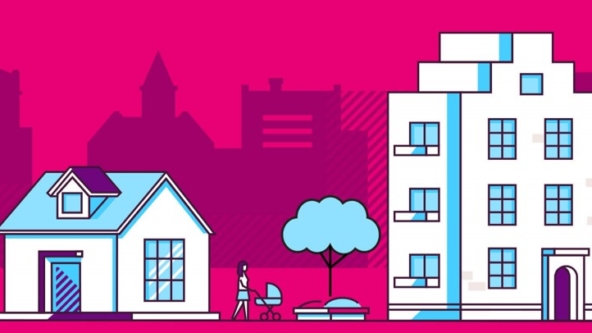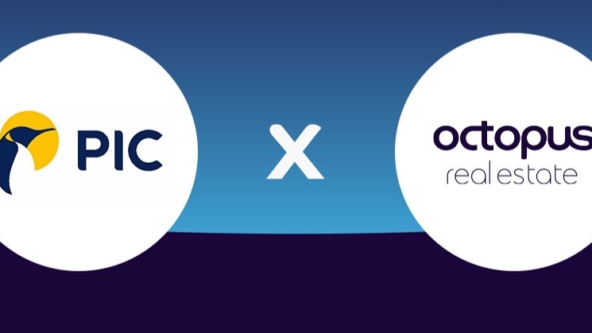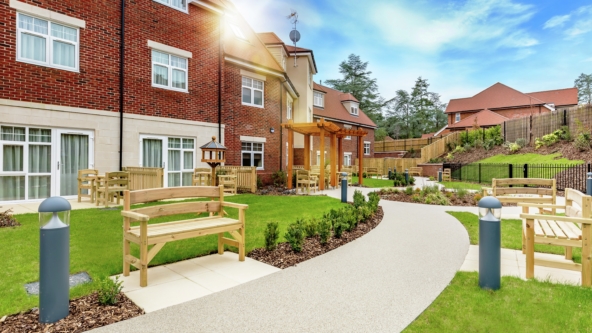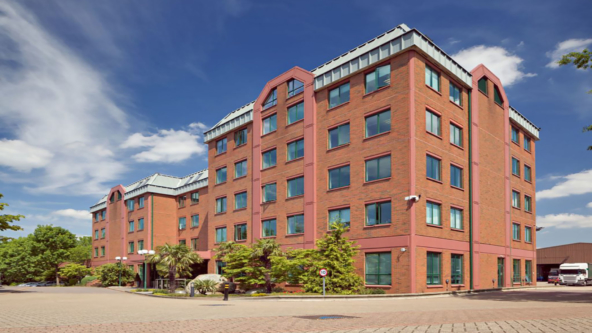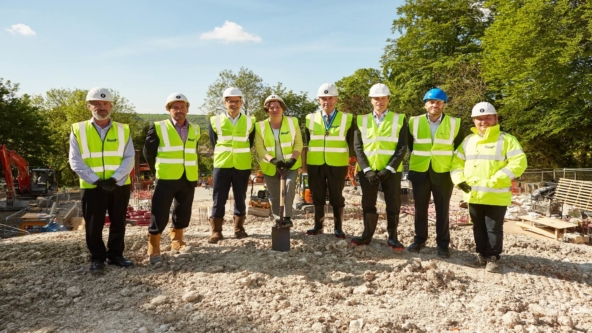How investors can meet the high expectations for a new generation of retirement housing
Contents
- Executive Summary
- The UK Retirement Housing Landscape
- Retirement Demographics and What They Want
- Where To Build The Next Generation of Retirement Accommodation
- An Investment Opportunity
- Conclusion
- Sources
Executive Summary
The UK retirement market presents some exciting opportunities for investors who want to be part of a booming housing sector.
The Baby Boomers are reaching retirement and they want to grow old in a different way to their parents’ generation. A sedentary lifestyle living in retirement housing or care homes out of sight and out of mind is not for them. They want high quality housing solutions that allow them to continue their active and comfortable lifestyles, playing their part in the local and wider community.
This demographic has high expectations and wants to live independently and enjoy retirement for as long as possible. Yet there is a significant shortfall of housing for this group. Only 2% of the UK housing stock is designated as retirement housing, and only a small percentage of that meets the demands of this new generation of retirees.
Octopus Healthcare and property experts Strutt Parker, recently commissioned a report into the needs and desires of the UK’s retirement generation. Called Housing Futures: The Platinum Generation our research surveyed over 2,200 respondents aged 65 and over, and explored current provision, attitudes to retirement, barriers to downsizing / rightsizing, financial considerations and aspirations for retirement living.
As a result of our research we have identified a potential solution that we are calling Platinum Places: retirement housing fit for the Baby Boomers and future generations.
In this whitepaper we explore the opportunity for property developers, landowners and investors to meet the shortfall in this booming sector, and provide innovative solutions for today’s retirees.
The UK Retirement Housing Landscape
Currently the UK retirement housing sector is made up of three different types of provision. These are:
1. Mainstream Housing
Mainstream housing consists of non user-specific houses, flats, and bungalows often adapted with age-friendly features.
For many retirees these properties are their primary homes that may no longer be ideal for retirement living. Retirees may wish to downsize or reduce the cost and effort of maintaining their property, but they lack suitable alternatives. In our survey we found that 42% of respondents believe there is a lack of suitable properties in the UK to downsize into.
Another significant barrier to moving out of their family homes is the image the retirement sector has. Only a fraction of the UK retirement housing stock caters for younger, more active retirees: just 1% of UK over 60s live in designated retirement accommodation, compared to 17% in the US and 13% in Austria.1
This trend towards continuing to live in the primary home is also having a negative impact on the rest of the housing market. With the Platinum Generation delaying downsizing, and thereby holding onto housing stock, there is less suitable housing for younger generations.
2. Specialist Housing
In the UK there is a small amount of retirement housing targeted at the over 55s to own or rent. The majority of this consists of retirement flats in developments with some onsite facilities and support services.
In recent years the number of retirement homes being developed has decreased dramatically, from 30,000 per year in 1980s to 8,000 per year today. This decline in new developments is creating the shortfall we are now experiencing, and this is a problem that can only get worse. Over the next 20 years the Baby Boomers will represent a large ‘bump’ in the ageing population. The Office of National Statistics2 predicts that by 2034 the over 65s will account for 24.3% of the UK population, compared to 14.9% in 1984.
With only 2% of the UK’s housing stock designated as retirement accommodation, there is a significant shortfall of suitable properties for retirees who wish to live independently but in accommodation specifically designed to meet their requirements as they get older.
3. Care Homes
Our ageing population is also driving demand for residential beds in both the private and public care home sectors.
However, demand for care homes has dropped within the ‘younger old’ demographic. Healthier diets, improved healthcare management, and more active lifestyles means that many retirees do not need specialist care until much later in life.
The care sector faces some significant challenges, with funding cuts, staff shortages and a long term trend of deregistrations and bed losses. With increased longevity combined with the Baby Boomer ‘bump’, demand for more beds will increase in the next 20 years as the ‘younger old’ become more elderly.
There are investment opportunities here, particularly in the mid and high end markets, building specialist purpose built care homes for wealthier older people who fall outside of state funded support.
Could Better Retirement Provision Reduce Demand For Care Home Beds?
Our report with Strutt Parker focused on people considering moving into retirement housing for the first time. The majority of respondents did not have a current need for a care home bed, and all wanted to forestall this eventuality for as long as possible.
However, 34% of respondents cited a ‘crisis event’ or needing more support as the biggest reason for moving into retirement accommodation. One of the key benefits of Specialist Housing is accessibility: with fewer stairs, level thresholds, and walk-in showers – all reducing the risk of falls.
This type of accommodation has the potential to allow residents to live independently for much longer, and therefore reduce demand for care home beds. However, it also needs be designed to promote longevity and wellbeing by encouraging activity, community involvement and reducing physical and mental health problems that might necessitate a residential home.
For investors this provides a great opportunity to provide the retirement generation with long term housing that reduces the burden on healthcare services.
Retirement Demographics and What Retirees Want
To meet the demand for retirement accommodation, developers, investors and operators need to address a diverse range of needs. While many retirees are fit and active, others have complex health issues and require very specific facilities and care.
In our report Housing Futures: The Platinum Generation we looked at ‘Retirement Tribes’ and identified six unique personas who are considering moving into retirement housing:
- Blitz Kidz – Aged over 70, Blitz Kidz tend to be single (possibly widowed or divorced), without access to private pensions or income from investments, and are looking for a retirement product that they can rent. They tend to be lifelong renters, but if they currently own their own home they are not likely to benefit from a large equity release when the property is sold. This tribe holds traditional values and will often have a ‘make-do-and-mend’ approach
- Peter Pans – Peter Pans are aged 60-65 and ‘kept up with the Joneses’ when they were working, but realise retiring from high-income jobs will restrict their accustomed lifestyle. While they have private pensions and investments, these are unlikely to fully fund their retirement, especially as they have a desire to help their children and grandchildren financially
- Sundowners – Likely to be aged over 65, this tribe is probably retired but enjoyed a high household income while working and now have income from both pensions and investments. They also own their home outright. They have enjoyed spending on goods, services and family members but haven’t planned for their housing and care provision in retirement
- Instagrammas – The Instagrammas (and Instagrampas) are socially outgoing and health conscious, not just concerning food but also when it comes to physical and mental fitness. They are attracted to technology and its benefits and would be considered early adopters for their cohort
- Savvy Shrinkers – Aged over 70, this tribe are the true downsizers. They are practical, constantly in a state of decluttering and have always planned to move to appropriately sized accommodation as their circumstances change
- Escalators – Likely to be single individuals, Escalators are over the age of 75 and seek a retirement village because of the services that it can offer. Whether it is weekly help with a grocery shop, or more personal needs, members of this group are beginning to require additional assistance, or recognise that they are likely to need extra support in the not too distant future
One of the headline findings from our report is that although 54% of respondents agreed they need to plan their care and support in later life, 73% of respondents have no plans in place for retirement accommodation or their care provision in later life. Moreover 45% stated they had no plans to move from their primary home, and 32% of respondents didn’t have a timeframe for downsizing or moving into retirement housing.
It would appear that in many cases, in part because of a lack of suitable accommodation, retirees would prefer not to think about their future needs.
Age Concern estimates that 25% of over 65s would be interested in buying a retirement property, but it needs to be the right kind of provision. These key barriers to making that move emerged from our survey:
- 42% believe there is a lack of suitable properties in the UK to downsize into
- 55% agree that retirement housing in the UK is not affordable
- For many there is a lack of retirement housing in their area (location analysis of care homes shows that 31% of residents come from over 10 miles away)
- The location of retirement housing is often away from local amenities leading to isolation and segregation (children today have a 5% chance of someone 65-plus living in their area, compared with 15% in 1991)
However, we know that high quality, aspirational retirement housing is in demand. The Platinum Generation want to downsize and move, but only on their terms. From our observations of the retirement marketplace, Octopus Healthcare sees this positive uptake every time a new development is launched on the marketplace that balances needs and desires. Properties are quickly occupied, and many existing retirement communities have closed waiting lists.
What Motivates The Platinum Generation To Move?
A ‘crisis event’ is often the trigger to move into retirement housing or add age-friendly features to mainstream housing – 34% of respondents cited needing more support as motivation for moving home – but our respondents also mentioned other reasons for considering a move. They include:
- 33% seek lower maintenance – modern homes that require less upkeep, or developments with onsite maintenance are particularly attractive to older residents
- 26% are looking for accessible homes – with level thresholds, fewer stairs and walk-in showers
- 23% want a smaller house of two or three bedrooms which still provides space for hobbies, guests or storage
- 22% wish to reduce outgoings – a recently built home will typically reduce outgoings by providing better insulation and energy efficiency compared with older properties
- 20% seek a smaller garden – outside space is important, for relaxation or pets, but keeping it to a manageable size is crucial
We already know that the Platinum Generation have high expectations for retirement housing, they do not want to live in the same way their predecessors did. Many also have property, pensions and investments to fund their retirement, and intend to continue to enjoy a high standard of living.
66% of respondents in our survey plan to use profits from selling their primary home to fund their retirement accommodation and care. The over 65s own a combined £1.031 trillion3 of housing equity. They also expect to reduce their outgoings on the maintenance, repair and energy, by moving into smaller property or leasehold.
By aggregating our survey results, including expectations for retirement housing such as the type of property, services, local amenities and location, we have created a model for the type of retirement housing that meets the expectations of the Platinum Generation. We believe that the Platinum Places concept is a fantastic opportunity for developers, investors and operators, providing a new breed of retirement housing for a demanding and growing demographic.
What The Platinum Generation Wants
Common themes around independence, community, accessibility and wellbeing emerged from our research. Whether looking to own their own retirement accommodation, or to rent, the Platinum Generation wants to make a positive lifestyle choice when moving into retirement housing. The following wish list shares the key requirements that would attract the Platinum Generation into specialist retirement housing:
- 86% believe that their privacy is essential
- 73% want the freedom to come and go as they please
- 71% would like to live where people help their neighbours and have shared tastes and interests
- 70% would like help as they become less able to manage
- 7% require extra room for guests
- 67% want access to broadband
- 66% would like to see 24-hour security
- 61% would like private outside space
- 6% are looking for a single storey residence
- 48% would like an on-site café
- 46% enjoy physical activity (e.g. golf, bowls, cycling)
- 45% are looking for attractive buildings and grounds with modern facilities
- 38% think communal gardens are a key feature
- 37% need storage that’s easily accessible
- 34% must have their pet living with them
- 26% would like to have access to an on-site swimming pool
- 11% enjoy having home comforts around them
Our research also suggests that as well as excellent services and facilities within a retirement development, the Platinum Generation also want to be part of the wider community and benefit from local amenities.
This requires developers, operators and local government to identify suitable land to meet the needs of the retirement generation on a local level.
Where To Build The Next Generation of Retirement Accommodation
There is a need for retirement housing with support and retirement housing with care. The Platinum Places solution focuses on providing aspirational retirement accommodation with support; with the objective of enhancing and prolonging residents’ active lifestyles.
The new retirement generation demographics clearly suggest that this is an opportunity for the private sector: for developers, investors and operators. But where should, and can, these new retirement communities be built?
Our research confirms a trend towards locating new retirement housing within the local community, as opposed to creating entirely new retirement communities isolated from the local population. The Platinum Generation wants access to shops, leisure and culture facilities, great transport links, and to continue to live meaningful lives in their local area.
Therefore the next generation of retirement housing, needs to be located within our villages, towns and cities: a significant challenge in already densely developed areas.
In our experience the most appropriate sites are surplus properties or land, brownfield sites or form part of a new multiuse development.
Surplus Properties And Land
With many buildings lying empty, both in public and private ownership, it is a logical step to build new retirement developments on this land. Examples of the type of site that makes an excellent location for retirement accommodation include: disused office buildings, pubs, surplus car parks, police and fire stations, private sports grounds, and even care homes.
Brownfield Sites
While brownfield sites have inherit challenges such as contamination, the investment opportunity presented by developing retirement housing on these sites surmounts many of the obstacles to development. Local authorities are also supportive of efforts to bring brownfield sites back into use; revitalising often rundown areas and reducing planning pressures on more sensitive greenfield sites.
Multiuse Developments
In line with the Platinum Generation’s desire to be part of the local community, not isolated living in retirement ‘ghettos’, is the opportunity to provide some small schemes within multiuse developments. The provision of retirement housing within other developments will, in many cases, assume some of the responsibilities of the local authority to meet housing need for older people in their areas.
Octopus Healthcare is working in partnership with landowners, developers, local authorities and operators to identify suitable sites and invest in the booming retirement market.
An Investment Opportunity
Octopus Healthcare believes that a new breed of retirement housing aimed at the Platinum Generation offers an exciting investment opportunity.
We are working with investors, developers and operators to meet demand for high quality, aspirational retirement housing in the heart of our communities. We think innovation schemes such as Platinum Places are the solution.
There is increasing government support for this type of development, and recent legislation has incentivised local planners to view planning applications more positively.
The Neighbourhood Planning Act 2017
On 27th April 2017 the Neighbourhood Planning Bill received Royal Assent and is now an Act of Parliament. The Act introduces for the first time a statutory duty on the Secretary of State (SoS) to produce guidance for Local Planning Authorities (LPAs) on how their Local Development Documents (LDDs) should address the housing needs that relate to old age or disability. The Housing Whitepaper states:
‘Guidance produced under this duty will place clearer expectations about planning to meet the needs of older people, including supporting the development of such homes near local services. It will also set a clear expectation that all planning authorities should set policies using the Optional Building Regulations to bring forward an adequate supply of accessible housing to meet local need. In addition, we will explore ways to stimulate the market to deliver new homes for older people.’
The Care Act 2014
Another significant piece of legislation that puts the onus on local authorities to address the needs of the Platinum Generation is the Care Act. The aim of the act is to, ‘to prevent, postpone and minimise people’s need for formal care and support… built around the simple notion of promoting people’s independence and wellbeing.’
This means that Local Authorities must ensure there are different types of retirement housing for the local population; especially housing that postpones the need for care homes and more specialist support. Moreover the focus is not just on the lower end of the market, but also ensuring the provision of retirement accommodation for more affluent retirees too.
Conclusion
The Platinum Generation is ready to move into retirement housing if, and only if, the provision meets their high expectations, needs and desires. The Baby Boomers have created a booming retirement market and now is the time to be part of this opportunity.
Octopus Healthcare is already investing in purpose built retirement developments with our partners; focusing on creating innovative accommodation for over-55s who are looking to downsize. These exciting developments will create community hubs that include restaurants, coffee shops, fitness studios, beauty salons and other communal facilities. Situated close to town and village centres, residents will also enjoy all the benefits of being part of the local community.
The powerful demographic trend of an ageing baby boomer generation makes investment in retirement housing a very attractive proposition. The sector is also not as exposed to economic forces, especially at the high end of the market, as residents typically sell their mortgage-free primary home to fund their retirement accommodation.
Investors who are interested in this opportunity should identify potential schemes for investment using the following criteria:
- A strong market with robust demand
- An experienced and innovative operator
- An operating strategy that addresses the high expectations of the Platinum Generation
- An attractive retirement development that will motivate the Platinum Generation to downsize
If you would like to discuss investing in retirement housing in more detail, please contact our team.
Call Mark Davis on +44 (0) 20 3142 4087 or email [email protected].
For a copy of our report Housing Futures: The Platinum Generation please visit www.octopushealthcare.com/press-and-media
Octopus Healthcare is not a typical healthcare business: it is all about the long-term partnership approach. As specialists in healthcare, it invests in and develops primary care centres, care homes, retirement villages, private hospitals and specialist schools. Its vision is to improve the health, wealth and wellbeing of the UK population through the great environments it creates, the businesses it supports and its product innovations. As the adviser to multiple funds, it has invested over £1billion in healthcare assets and only invests in buildings and operators who share our values and are as obsessed with the patient experience as we are. Our flexible approach means we can provide funding to support delivery of more than just a building. We can work with operators to build businesses that will become market-leading companies in the delivery of better healthcare for the UK.
- www.demos.co.uk/project/the-top-of-the-ladder/
- www.ons.gov.uk/peoplepopulationandcommunity/
- https://www.ftadviser.com/pensions/2016/12/12/homes-earn-26-000-a-year-for-over-65s/
Octopus Healthcare
33 Holborn,
London
EC1N 2HT
+44 (0) 20 3142 4820
octopushealthcare.com
